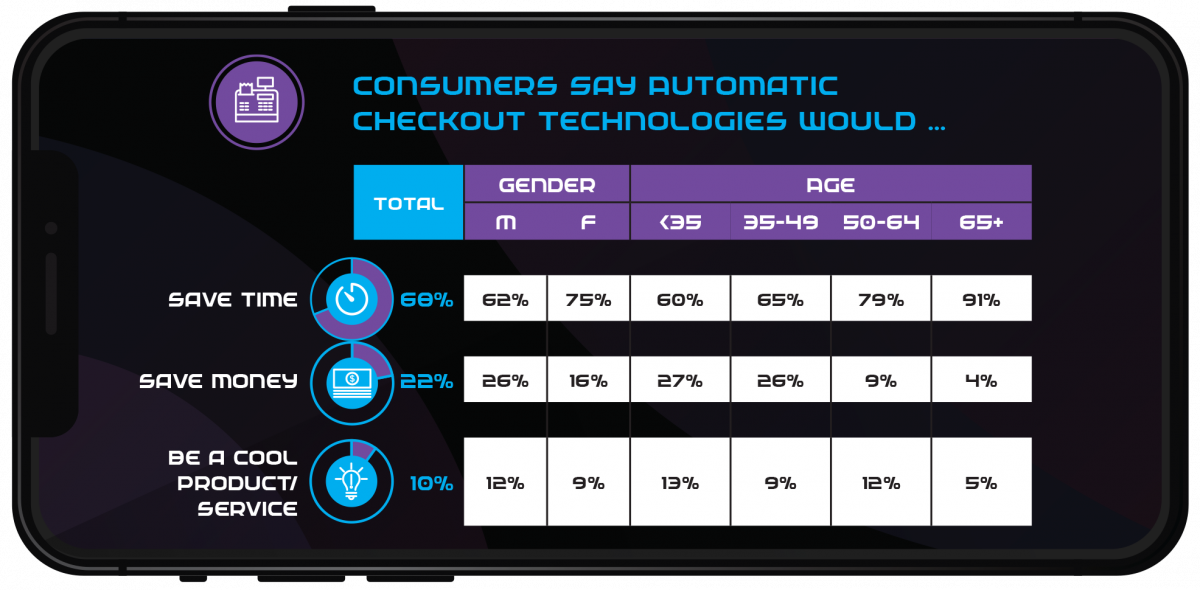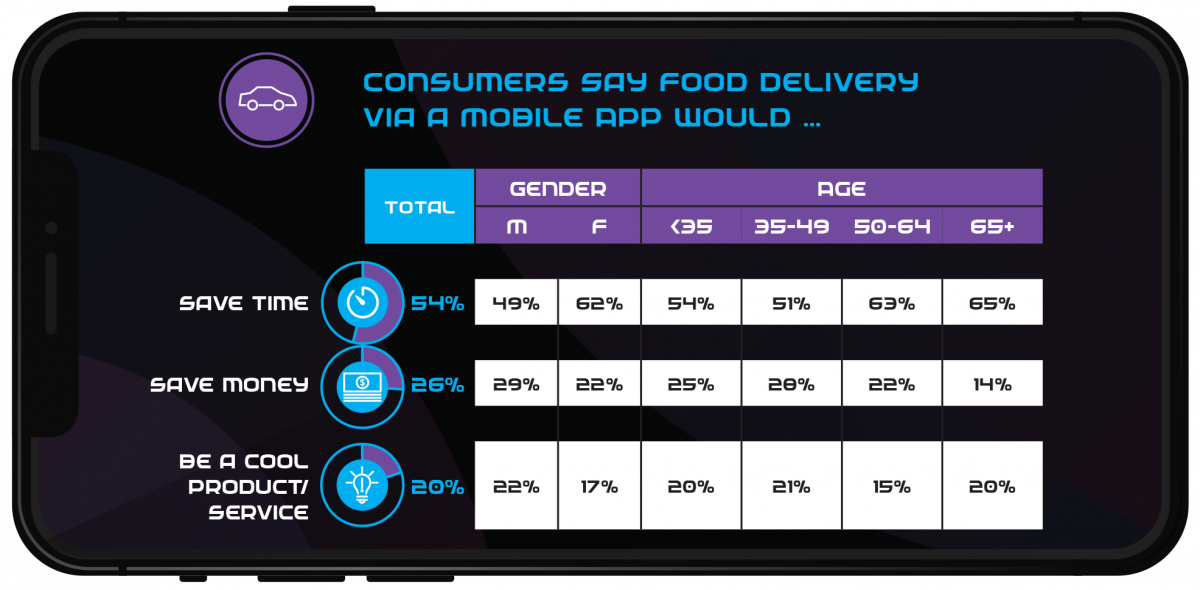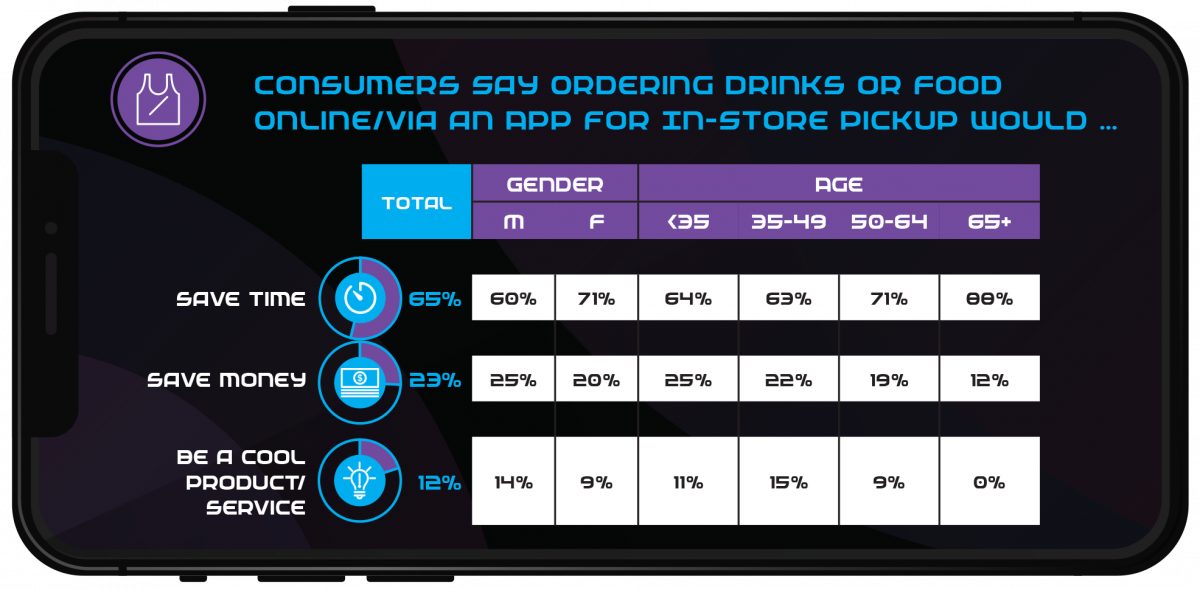Convenience stores have been saving consumers time on their shopping experiences since 1927. During those first few decades after their emergence, convenience meant extended hours of operation. In the post-World War II era, convenience was more about location as populations in the suburbs exploded. And as convenience evolves—especially during the COVID-19 pandemic—retailers continue to strive to deliver a quick and easy experience for the estimated 165 million consumers a day, including the millions of consumers who purchase fuel.
During the pandemic, most U.S. convenience stores have remained open to serve their communities and have found new ways of redefining the “time” consumers spend inside the store and at the pump.
In the current COVID climate, saving time continues to be relevant—but not because customers are busy taking kids to school or getting to work on time. Today, time is an important safety factor as customers move quickly in and out of stores, utilize delivery, access the drive-thru or curbside pickup.
Past NACS consumer surveys found that the industry’s ability to save time resonated with 63% of consumers who shopped at c-stores because of their convenient locations and quick queueing, and more than half of consumers (52%) said that beyond food and gas, they chose to shop at a c-store because the locations allowed them to get in and out fast.
What’s more, a NACS Speed Metrics survey indicates that consumers want a quick and easy shopping experience. The survey found that the average time it takes for a customer to leave a car and enter a c-store and return to the car with a purchase was three minutes and 33 seconds. Compared with other retail channels (QSR, drug, dollar, grocery), consumers in a 2018 NACS survey also said that convenience stores have the shortest lines by a nearly 2-1 margin.
Today, time is an important safety factor as customers move quickly in and out of stores, utilize delivery, access the drive-thru or curbside pickup.
The pandemic may have slowed foot traffic, but it has not stopped retailers from leveraging digital options and technologies to engage their customers.
Contactless Shopping
With the ubiquity of mobile devices and e-commerce, more convenience stores have been embracing technologies that make frictionless shopping experiences possible.
Kwik Chek, High’s and Enmarket are three convenience retailers that have integrated Skip mobile checkout, which allows customers to shop the store, scan items via an app on their mobile device, pay via debit/credit and leave the store without standing in line or visiting the register. The shopping process is literally in the hands of the consumer.
Contactless technologies also allow retailers to collect more data to learn how their customers are shopping the store, such as items purchased, time of day, trip frequency—all of which can help retailers deliver a personalized customer experience. Many of these technologies also integrate with the company’s loyalty rewards programs.
In the automated checkout space, Amazon Go announced in March that it had begun signing deals with retail customers for its “Just Walk Out” technology.
Loop Neighborhood Markets opened a cashierless Loop “nanostore” in Campbell, California, a collaboration with startup AiFi. The 1,500-square-foot store carries 1,500 SKUs. It’s equipped with 12 cameras that capture shopper movements and servers that analyze the data. To enter the store, consumers download an app and connect a payment method with AiFi’s digital checkout system.
Most consumers (68%) in the 2020 NACS survey said contactless and automatic checkout technologies would save them time, while just 22% think it would save them money. Interestingly, it’s not just the younger generation interested in this type of convenience.

Food Delivery and Pickup
During the nationwide “stay-at-home” orders, many Americans were unable to make a quick run to the store for necessities, meal solutions or even a treat.
7-Eleven continues to use its proprietary 7NOW delivery app to bring food and merchandise to customers, and for added peace of mind, customers can request contactless delivery and have orders left at their front door. In July, 7-Eleven added a new feature to the app to enable customers to pre-order and pre-pay for purchases to pick up at participating stores.
“How convenience is defined is completely different today than it was just a month ago,” said Chris Tanco, chief operating officer for 7-Eleven, in a press release. “Our customers are now looking for more convenient shopping solutions at home.”
Ankeny, Iowa-based Casey’s launched a new mobile app in 2019, where customers can customize their pizza, place an order for delivery or carryout and save orders for future reference. To minimize human-to-human contact, customers can choose “no contact” in the delivery instructions at checkout when making an online or in-app order. Delivery drivers place the order in a clean location on the doorstep, knock and move to a safe distance while the customer retrieves the order. “Now, more than ever, it’s important to provide our guests with greater access to options for safe and convenient delivery for a family dinner or the essentials they need,” said Chris Jones, chief marketing officer, Casey’s.

In early April, Casey’s announced a new partnership with DoorDash to expand delivery across the company’s 16-state footprint. In September, the retailer began offering curbside pickup after pilots in several cities revealed that customers appreciated the option via the Casey's app, and liked the convenience of being able to submit their pizza and grocery orders before arriving and have their orders placed in the vehicle’s trunk by a team member.
With roughly 273 million smartphone users (Statista.com) in the United States, mobile capabilities for placing a pickup food order had already been developing as a strategic driver among convenience retailers with robust foodservice programs and technology solutions to support online and in-app ordering. Today, these digital solutions have taken off as customers seek establishments that offer in-store and/or curbside pickup.
Kum & Go announced plans to expand forecourt delivery services to stores in 12 states. To pick up food and merchandise at the curb, customers call the main store phone number and place their order, which is delivered to their vehicle upon arrival. “We are always looking for ways to better safeguard our customers and associates,” said Tanner Krause, president of Kum & Go. “Going back to our roots to provide a full-service fueling option can help people maintain social distancing and avoid common touchpoints. Our stores provide essential services and goods, and we are proud to be able to support our communities during these challenging times.”

54% of customers agreed that food delivery via a mobile app would save them time.
Sheetz launched a new “SHcan & Go!” feature at all stores, allowing shoppers to scan and pay for products through the Sheetz app, as well as minimize the need for interaction during the checkout process. “This new feature continues to deliver on our mission to be the ultimate in convenience, allowing customers to scan and pay for items they need easily and quickly,” said Travis Sheetz, president and COO. “Innovation has always been a key driver at Sheetz, and we will continue to look for new, innovative ways to serve our customers and provide essential needs in these uncertain times.”
RaceTrac rolled out an online ordering platform in late April that allows customers to abide by safe social distancing guidelines. By visiting order.racetrac.com, customers can select merchandise and pick it up at the nearest RaceTrac location within 30 minutes via the “Grab and Go Box” pass-through window. Purchases are completed at pickup by credit card only. “RaceTrac is committed to the continuous support of our communities and guests through this unprecedented and uncertain time,” said Melanie Isbill, chief marketing officer of RaceTrac. “Online ordering is the newest addition to the products and services we are offering to help continue to get our guests whatever gets them going while providing a safe, clean and reliable experience.”
Adopting and leveraging technology can bring time-saving applications to your store, especially as more convenience customers embrace a digital lifestyle more quickly than ever before. And while time-saving technologies are cool, customers are saying that the time they save trumps the coolness factor. Customers are more interested in how technology can enrich their lives, and now, more than ever, that finding is important to keep in mind.